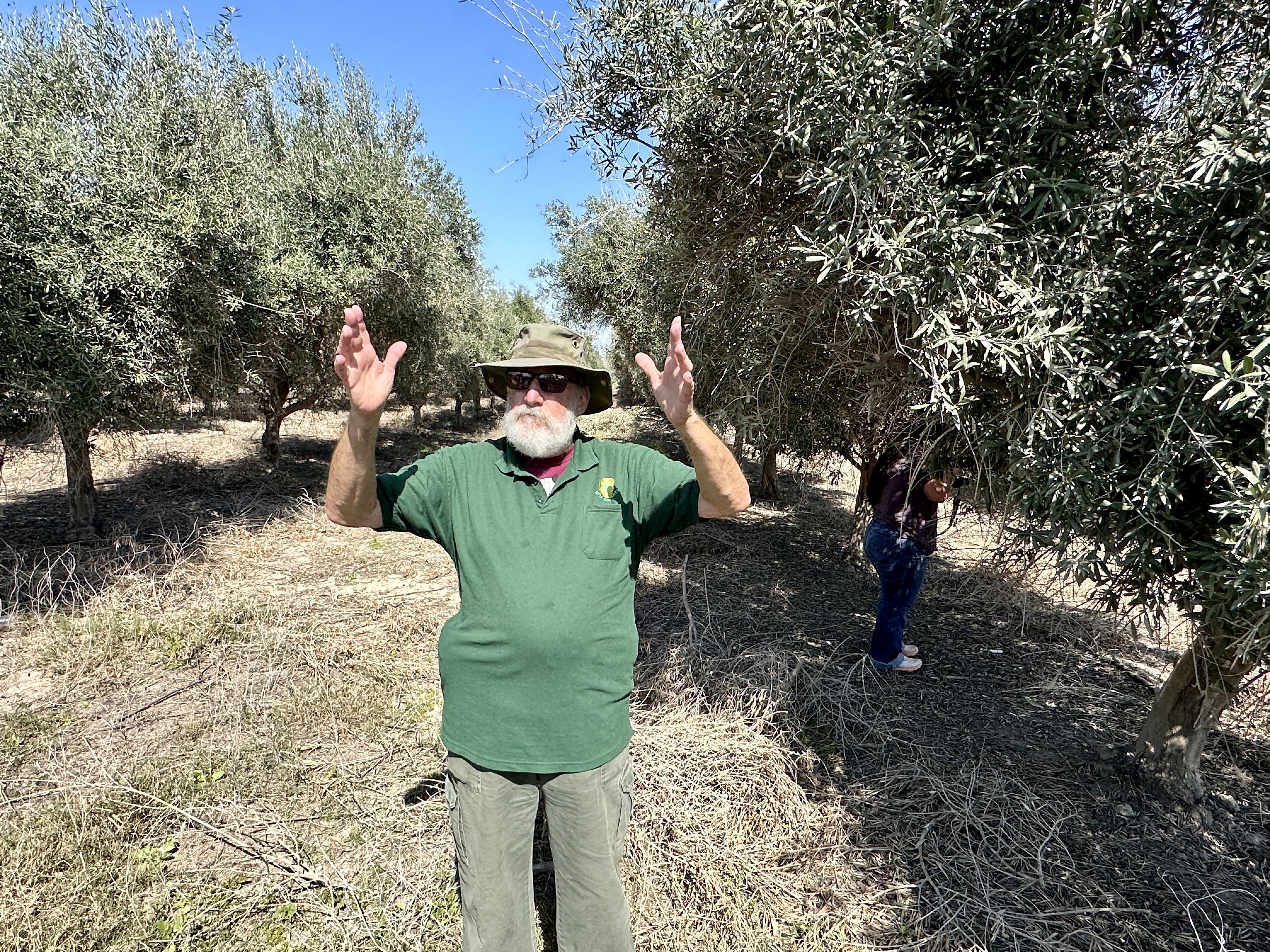
Agricultural News
Oklahoma Ag Leadership Program Sees Diverse Farm Operations in Jordan River Valley of Israel
Sun, 19 Feb 2023 21:17:30 CST
 Class XX of the Oklahoma Ag Leadership Program continues to travel across Israel for their capstone international experience. Over this past weekend- they concentrated on cultural/historical sites on Saturday- the Sabbath in the Jewish country. On Sunday- two ag related visits were made as they traveled north from the Dead Sea to the Sea of Galilee.
Class XX of the Oklahoma Ag Leadership Program continues to travel across Israel for their capstone international experience. Over this past weekend- they concentrated on cultural/historical sites on Saturday- the Sabbath in the Jewish country. On Sunday- two ag related visits were made as they traveled north from the Dead Sea to the Sea of Galilee.
Program Director Edmond Bonjour offered these notes about the visits on Sunday.
OALP visited one of the largest organic farming operations in Israel that was found on Kibbutz Sde Eliyahu. On the Kibbutz, we saw an oil rig from Texas that had drilled down 3.73 miles and laterally 4.35 miles, but has not found oil, although geologically it should be there. This region of the Jordan Valley only receives 11-13 inches of rain per year, so they rely mainly on drip irrigation, but also some sprinkle irrigation. The water comes from a reservoir storing water from the desalination plant. More pressure is needed for sprinkle irrigation.
ABetzalel, Beni’s son and farm manager, oversees 1,000 acres of fields. He told us that wheat is planted in December and yields 56 bushels per acre. There are bird houses in the wheat field to house barn owls who control the mice population. A typical barn owl family can eat 5,000 mice per year! Corn is also grown here because the young corn is initially grown under plastic tunnels, warm weather, and good soil which holds moisture and is high in minerals. Corn silage for cattle is planted in early April and harvested in mid-July and yields 6 tons per acre. Sweet corn, planted in mid-September and harvested in mid-January, can yield up to 10 tons per acre, but he said that it is not very sweet. Clover is planted after the corn harvest, but this year the birds ate the clover seedlings and he has no insurance.
Around the asparagus field, they have an electric fence to keep out wild hogs. Watermelon seedlings are planted in mid-January and harvested in mid-May. The seedlings are covered with two layers of plastic to protect them from cold temperatures and hail. They are experimenting with double-row corn. They plant seven seeds per 3.28 feet and the double rows are about 15 inches apart with a drip irrigation every one foot. The distance between double rows is 6.3 feet.
Tomatoes for Heinz are planted in double rows in mid-February and harvested in mid-June. There are 10,000 seedlings per acre that yield 48 tons per acre, using a mechanical harvester. They use a tensiometer to determine the soil moisture for tomatoes. Since the tomatoes are planted for an industry, they must be insured.
NOTE- Senior Farm Broadcaster Ron Hays, traveling with Class XX, talked one of the senior leaders for the Kibbutz, Beni Gavrieli. He will be posting that interview this week from Israel.
Next stop on Sunday after lunch was at a fish farm operation:
The last OALP visit today was at Kibbutz Nir David Cooperative where they have 250 acres of fish ponds. This is the oldest fish farm in Israel, established in 1937, and originally grew carp in the stream.
They now grow bass, sea bass, carp, grass carp, tilapia, red tilapia, mullet, and barramundi. Fingerlings are grown in ponds covered with netting to protect them from birds. They are fed extruded feed pellets containing corn, wheat, and soy bean.
There are three rearing methods: intense (open ponds), semi-intense (ponds in a greenhouse), and super intense (totally enclosed), and for tilapia, the yield is 1.25, 2.5, and 5.0 pounds per cubic foot, respectively. Overall, they market 1,500 tons per year and send the live fish to the processor jointly owned by other Kibbutz at night. The growing ecosystem depends on algae and temperature. For example, tilapia want warm water at 86 degrees, and do not like the 52 degree water in winter.
The super intense system, which is totally enclosed, was built in 2018 for about $8 million. It has 18 tanks and produces 150 tons of barramundi using 52.8 million gallons of water. To produce the same tonnage of fish outside in open ponds would use 264 million gallons of water. They harvest about 3 tons of barramundi each week.
This facility is located in the migratory bird route from Europe to Africa, and they have problems with some birds such as pelicans. They string cables every 33 feet above the open ponds so that pelicans cannot land. Nets are also installed over the ponds, and large motorized toy boats are used to chase off the pelicans. They are experimenting with a floating solar farm on an open fish pond. One issue is bird excrement on the panels which blocks the sunlight and causes corrosion.
WebReadyTM Powered by WireReady® NSI
Top Agricultural News
More Headlines...




